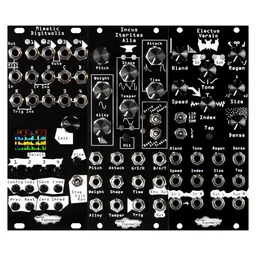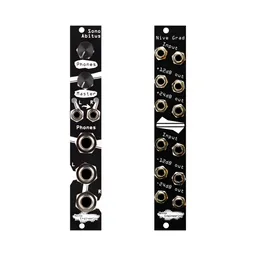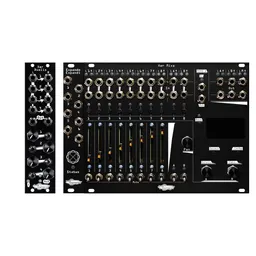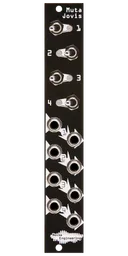Welcome back to Getting Started, the series where we explore the fundamental types of Eurorack modules and discuss what they do, how to use them, and how they fit into a system. Today, we’ll be discussing mutes. Mutes are a simple and useful performance utility that make their way into patches a variety of different ways.
The basics
Mutes have a number of uses, but their basic principle is simple: generally, they have an input, an output, and are controlled by a switch (or sometimes a button). Signals patched to the input will either be allowed to pass through to the output when unmuted, or, when muted, will not be allowed to pass through to the output.
So, what can we use this for?
Muting audio
The most traditional use for a mute is with audio signals. Simply patching an element of your patch through a mute is a useful way to control arrangement while you’re playing, and it gives direct control over whether or not a sound is heard.

The main disadvantage of using mutes directly on audio signals is that the timing of the mute in your performance has to be very precise: if a kick drum is muted after it has already triggered, it will lose its tail partway through, causing a noticeable change in the sound of performance. A great way to work around this is to mute the signal that control the sounds in the first place…
Muting gates and triggers
One of the biggest advantages of modular synthesis is flexibility. If muting audio isn’t giving us the type of control we want over our patch, we can simply change the order of our signal chain.
By running a gate or trigger sequence through a mute, we can control whether or not a voice in our patch is activated, without affecting the audio itself.
Using the kick drum example, we could mute the sequence triggering our kick at any time without affecting the sound of the kick drum itself: it simply wouldn’t be triggered anymore once it’s muted, allowing its tail to ring out—creating a more subtle (and often more desirable) change during our performance.

Muting CV
The last and most unique-to-modular use for mutes is with CV. I often run CV sequences through mutes when using voices in a melodic context: this means that when the CV is unmuted the voice plays a melody as usual, but when muted it plays the same rhythm at its root note. It’s a useful effect for creating transitions in performances and changing the complexity of a voice as a performance goes on.

For advanced patchers: muting clocks
One of my favorite techniques in modular performance is using mutes to manipulate clock signals. Putting a mute signal between a clock generator and a sequencer is a fun way to mix up a patch: muting for just a moment will knock the sequencer out of phase, creating an instant variation, and muting it for a longer period will make the sequencer hold on whatever step it was muted on. If you use an infrequent clock (like a /128 clock division from a clock divider) to reset your sequencer, you can manipulate sequencer timing like this and it will eventually jump back in-phase every few measures. It’s a great way to create breakdowns and variations on riffs at the flip of a switch.
Suggested Modules
Noise Engineering Muta Jovis: a simple four-channel mute.
Happy Nerding 4xMUTE: A four-channel button-controlled mute.







